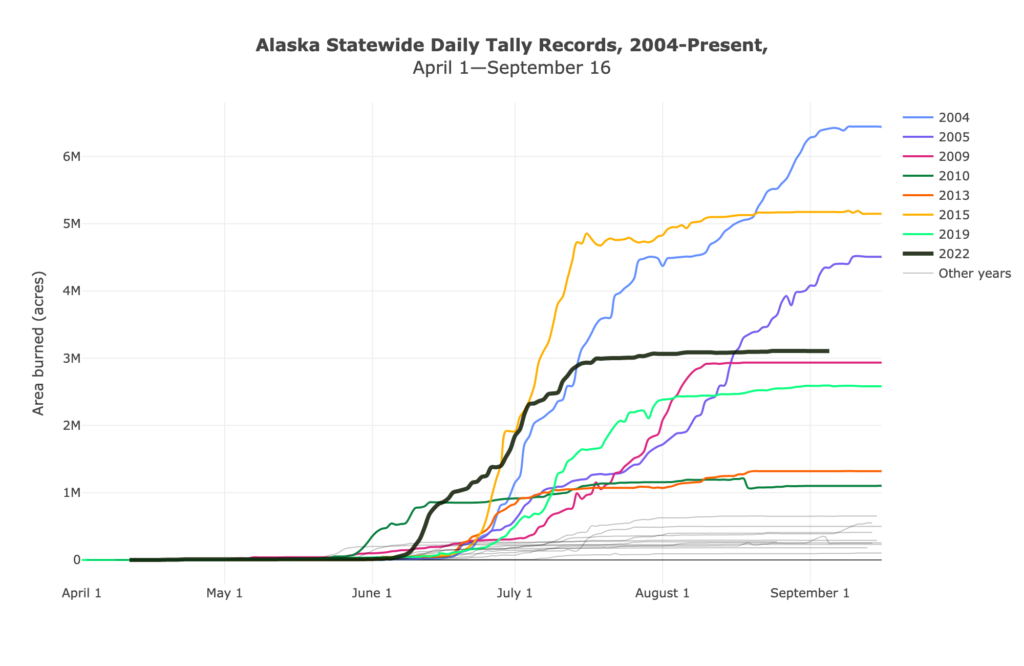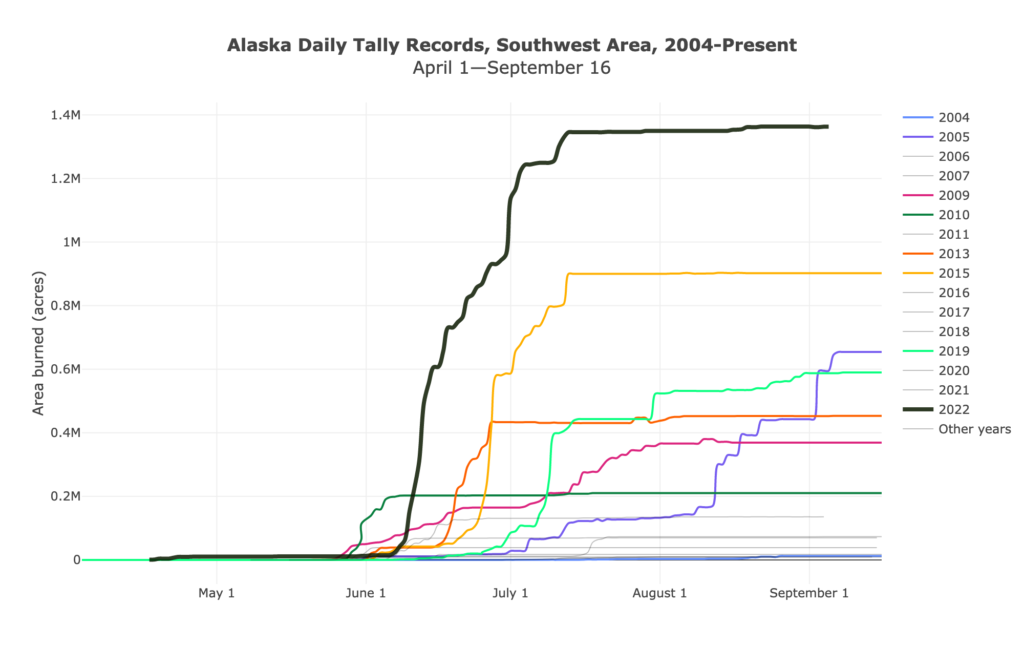Cool and wet weather patterns in August brought the unusual 2022 fire season to an end in much of the state. Acreage burned and the number of total fires increased only moderately over the last weeks. However, dry conditions persist in parts of the Interior and late season lightning caused several new fires in August, leading to evacuations around Delta Junction.
As of September 7, the year-to-date fires total is 587 (moderately up from 557 at the end of July), with 3,107,570.6 acres burned. 285 fires were human-caused, burning 11,715.2 acres, while 282 were lightning-sparked, burning 3,092,479.8 acres. Another 20 fires had undetermined causes (Alaska Interagency Coordination Center Situation Report, September 7, 2022).
As can be seen in the smoke forecast on the right, several active fires in the central Interior and the Southwest are still producing reduced air quality. However, the situation is much improved compared to June and July, which saw prolonged periods with hazardous amounts of smoke in many parts of the state.
2022 among years with most area burned
The last fire season with more than 3 million acres burned was 2015. The 3 million mark was only reached in 7 years (2022, 2015, 2005, 2004, 1990, 1969, 1957) since accurate reporting began in 1950. The 2022 season got going earlier than most years and reached 1 million burned acres by June 19th. The increase in burned acreage was especially steep between the end of June and mid-July due to a combination of intense lightning activity and dry conditions on the ground. The increase in acreage and in the total number of fires then dropped off sharply as weather patterns shifted. Fuels were dampened by widespread precipitation and lightning frequency decreased.
While significant increases in fire activity in September are not unheard of (see 2004 and 2005 in the plot below), it is unlikely that the fire season will pick up again this year due to the lack of dry fuels in much of the state. As mentioned above, the Interior remains the exception in terms of conditions on the ground.
Burned acreage milestones 2022:
- June 19 – 1,005,196 acres
- July 2 – 2,020,511 acres
- July 21 – 3,000,532.9 acres
Where were the fires?
The 2022 season did not break the Alaska-wide record of 2004 (about 6.5 million acres burned), but did break records regionally. Over a third of the total area affected by fires was in the Southwest zone (map of Alaska fire management zones), a part of the state that typically does not see this level of fire activity and has not previously been recorded crossing the 1 million mark for burned acreage.
In contrast, the more typically fire prone regions in the Interior – such as the Upper Yukon Zone in the plot below – had a relatively mild fire season to date. Fires in the Upper Yukon and other Interior zones drove the state-wide acreage tally in the record years 2004 and 2005. Similar to this year, 2015 also saw a relatively large contribution to total acreage burned from the Southwest. Researchers are investigating the role climate change plays in this context. The vegetation in the tundra of the Southwest zone is affected by changing climatic conditions, which can in turn lead to changes in fuel availability.






